Recommended Agile Reading
Part 1: Scrum Essentials
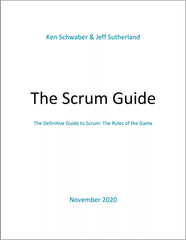 “The Scrum Guide: The Definitive Guide to Scrum – The Rules of the Game” by Ken Schwaber and Jeff Sutherland. The Scrum Guide is the single standard reference for the Scrum community. There have been several updates since it was first published in 2010, with the current version published in November 2020.
“The Scrum Guide: The Definitive Guide to Scrum – The Rules of the Game” by Ken Schwaber and Jeff Sutherland. The Scrum Guide is the single standard reference for the Scrum community. There have been several updates since it was first published in 2010, with the current version published in November 2020.The website also has the Scrum Guide in about 40 different languages, so if you’d prefer to read the Scrum Guide in a language other than English, head over to the website and find a translation for your language of choice.
 “The New New Product Development Game” by Hirotaka Takeuchi and Ikujiro Nonaka. Published in the January 1986 edition of the Harvard Business Review, this article inspired Jeff Sutherland and led to the creation of Scrum with Ken Schwaber. The products discussed in this article are very dated, but many ideas and concepts are still fresh and relevant to modern product development.
“The New New Product Development Game” by Hirotaka Takeuchi and Ikujiro Nonaka. Published in the January 1986 edition of the Harvard Business Review, this article inspired Jeff Sutherland and led to the creation of Scrum with Ken Schwaber. The products discussed in this article are very dated, but many ideas and concepts are still fresh and relevant to modern product development.
 “Scrum Mastery: From Good to Great Servant-Leadership” by Geoff Watts. There are many books aimed at new Scrum Masters. They often cover different aspects of being a good Scrum Master depending upon the authors’ experience and interest. This book and the next book (“The Great Scrum Master”) are my picks for helpful, practical advice written in an easy-to-read style.
“Scrum Mastery: From Good to Great Servant-Leadership” by Geoff Watts. There are many books aimed at new Scrum Masters. They often cover different aspects of being a good Scrum Master depending upon the authors’ experience and interest. This book and the next book (“The Great Scrum Master”) are my picks for helpful, practical advice written in an easy-to-read style.
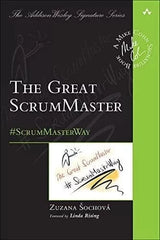 “The Great Scrum Master: The ScrumMasterWay” by Zuzana Šochová. This book is my other choice for an excellent introduction to Scrum and the Scrum Master role. The author shares her experiences as a Scrum Master and explores the essential qualities and skills for success in this role, such as communication, leadership, empathy, and resilience.
“The Great Scrum Master: The ScrumMasterWay” by Zuzana Šochová. This book is my other choice for an excellent introduction to Scrum and the Scrum Master role. The author shares her experiences as a Scrum Master and explores the essential qualities and skills for success in this role, such as communication, leadership, empathy, and resilience.
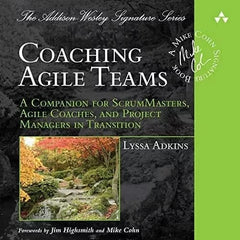 “Coaching Agile Teams: A Companion for Scrum Masters, Agile Coaches, and Project Managers in Transition” by Lyssa Adkins is a guide to coaching Agile teams and implementing Scrum in organizations. The book covers the principles and practices of Agile coaching and offers practical advice for developing effective coaching skills and facilitating teams’ transition to Scrum.
“Coaching Agile Teams: A Companion for Scrum Masters, Agile Coaches, and Project Managers in Transition” by Lyssa Adkins is a guide to coaching Agile teams and implementing Scrum in organizations. The book covers the principles and practices of Agile coaching and offers practical advice for developing effective coaching skills and facilitating teams’ transition to Scrum.
Part 2: Product Creation
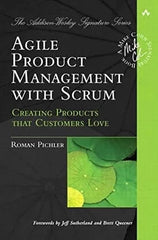 “Agile Product Management with Scrum: Creating Products that Customers Love” by Roman Pilcher. Roman explores how to manage product development using Scrum effectively. He emphasizes the importance of prioritizing customer needs and engaging stakeholders throughout the product development process.
“Agile Product Management with Scrum: Creating Products that Customers Love” by Roman Pilcher. Roman explores how to manage product development using Scrum effectively. He emphasizes the importance of prioritizing customer needs and engaging stakeholders throughout the product development process.
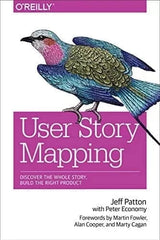 “User Story Mapping: Discover the Whole Story, Build the Right Product” by Jeff Patton and Peter Economy is a guide to user story mapping. Story Mapping is a technique to understand the relationships between user stories and use that knowledge to plan releases. The book covers the concept of user story mapping and provides a step-by-step guide to creating effective maps. With its focus on real-world examples and case studies, the book offers a comprehensive guide to the benefits of user story mapping, including how it can help teams prioritize work, improve collaboration, and better respond to user needs. Watch this video of Jeff Pattons’ 2014 presentation at YOW, if you’d like a better understanding of Story Maps and how they’re used.
“User Story Mapping: Discover the Whole Story, Build the Right Product” by Jeff Patton and Peter Economy is a guide to user story mapping. Story Mapping is a technique to understand the relationships between user stories and use that knowledge to plan releases. The book covers the concept of user story mapping and provides a step-by-step guide to creating effective maps. With its focus on real-world examples and case studies, the book offers a comprehensive guide to the benefits of user story mapping, including how it can help teams prioritize work, improve collaboration, and better respond to user needs. Watch this video of Jeff Pattons’ 2014 presentation at YOW, if you’d like a better understanding of Story Maps and how they’re used.
 “Four stages of the Epiphany: Successful strategies for products that win” and “The Startup Owners Manual: The step-by-step guide for building a great company” both my Steve Blank. In “The Four Stages of the Epiphany”, Steve Blank offers a honest and actionable guide to building successful startups. Blank presents a framework that encourages entrepreneurs to validate their assumptions and test their ideas in the real world before scaling, thereby increasing their chances of success.
“Four stages of the Epiphany: Successful strategies for products that win” and “The Startup Owners Manual: The step-by-step guide for building a great company” both my Steve Blank. In “The Four Stages of the Epiphany”, Steve Blank offers a honest and actionable guide to building successful startups. Blank presents a framework that encourages entrepreneurs to validate their assumptions and test their ideas in the real world before scaling, thereby increasing their chances of success.Steve Blank is an Adjunct Professor, Management Science and Engineering at Standford, and his first book (4 Stages) is reportedly derived from his lecture notes. It’s a very dry book but does detail his approach to the Customer Development process.
The Startup Owners Manual draws on ideas on Customer Development introduced in 4 Stages, but it is a much more accessible book, ie. it’s easier to read. I suggest you start with the Startup Owners Manual and then read 4 Stages if you’d like to explore the Customer Development process in more detail.
On a totally unrelated note, here’s Steve Blanks’ famous presentation called “The Secret History of Silicon Valley.”
Part 3: Management and Leadership
 “Out of the Crisis” by W. Edwards Deming. In Out of the Crisis, Deming argues that the problems faced by organizations are mostly caused by management practices and provides a roadmap for transforming management practices through his 14 points for management. The book also stresses the importance of statistical process control and continuous improvement in achieving long-term success.
“Out of the Crisis” by W. Edwards Deming. In Out of the Crisis, Deming argues that the problems faced by organizations are mostly caused by management practices and provides a roadmap for transforming management practices through his 14 points for management. The book also stresses the importance of statistical process control and continuous improvement in achieving long-term success.
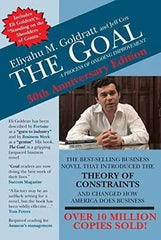 “The Goal” by Eli Goldratt. The Goal is an unconventional book written as a narrative. It follows the journey of Alex Rogo, a beleaguered plant manager tasked with saving his failing factory from imminent closure. As he grapples with mounting pressure from upper management, Alex discovers the power of a unique problem-solving technique called the Theory of Constraints, which transforms his approach to management and ultimately saves his plant from ruin.
“The Goal” by Eli Goldratt. The Goal is an unconventional book written as a narrative. It follows the journey of Alex Rogo, a beleaguered plant manager tasked with saving his failing factory from imminent closure. As he grapples with mounting pressure from upper management, Alex discovers the power of a unique problem-solving technique called the Theory of Constraints, which transforms his approach to management and ultimately saves his plant from ruin.The Goal is one of the most original books on management and made a strong impression on me when I first read it 20 years ago. If I were to choose just two books from this list, I would suggest “The Goal” and “Out of the Crisis.”
Part 4: Technical
 “Continuous Delivery” by Jez Humble is an excellent book that provides a comprehensive overview of continuous delivery practices. The book covers many topics, including automation, testing, and deployment, and includes practical examples and case studies to illustrate each point.
“Continuous Delivery” by Jez Humble is an excellent book that provides a comprehensive overview of continuous delivery practices. The book covers many topics, including automation, testing, and deployment, and includes practical examples and case studies to illustrate each point.
“The Phoenix Project” by Gene Kim follows the story of an IT manager tasked with turning around a struggling project. Through his journey, the reader learns valuable lessons about project management, communication, and the importance of collaboration between development and operations teams. Kim presents complex ideas in a clear and engaging manner, making it accessible to readers with varying levels of technical expertise.
The Phoenix Project gave rise to the DevOps movement and is essential reading to understand how modern teams deliver production-ready software.
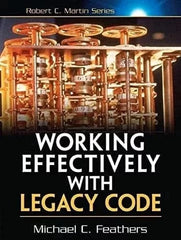 “Working effectively with Legacy Code” by Michael Feathers discusses how Agile teams work with an existing code base with all of it’s difficulties and imperfections. The experience of reading Michael Feathers’ “Working effectively with Legacy Code” is like peeling back the layers of an onion, only to discover that there are more layers beneath. Feathers delves into the complexity of dealing with code that has become difficult to maintain due to years of accumulated cruft and technical debt. He takes a pragmatic approach to the problem, emphasizing the importance of understanding the code and its behavior before attempting any changes.
“Working effectively with Legacy Code” by Michael Feathers discusses how Agile teams work with an existing code base with all of it’s difficulties and imperfections. The experience of reading Michael Feathers’ “Working effectively with Legacy Code” is like peeling back the layers of an onion, only to discover that there are more layers beneath. Feathers delves into the complexity of dealing with code that has become difficult to maintain due to years of accumulated cruft and technical debt. He takes a pragmatic approach to the problem, emphasizing the importance of understanding the code and its behavior before attempting any changes.If you’re working with a complex code base and looking for practical, actionable advice, then this book is for you!
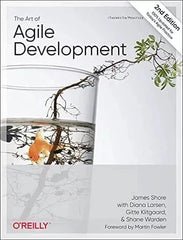 “The Art of Agile Development” by James Shore. “The Art of Agile Development” is a comprehensive guide to Agile development practices. The author emphasizes the importance of collaboration, feedback, and continuous improvement, providing practical advice on how to apply these principles in real-world situations. The book also includes case studies and examples that illustrate the benefits of Agile development.
“The Art of Agile Development” by James Shore. “The Art of Agile Development” is a comprehensive guide to Agile development practices. The author emphasizes the importance of collaboration, feedback, and continuous improvement, providing practical advice on how to apply these principles in real-world situations. The book also includes case studies and examples that illustrate the benefits of Agile development.
Part 5: Scaling
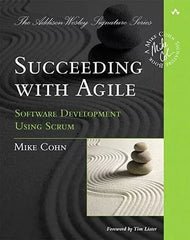 “Succeeding with Agile: Software Development Using Scrum” by Mike Cohn is a book of patterns Scrum teams and organizations use. It’s not the type of book you’d read cover-to-cover. You could read it cover-to-cover if you wanted to, but it would be like reading a dictionary.
“Succeeding with Agile: Software Development Using Scrum” by Mike Cohn is a book of patterns Scrum teams and organizations use. It’s not the type of book you’d read cover-to-cover. You could read it cover-to-cover if you wanted to, but it would be like reading a dictionary.It covers a variety of patterns, from team-based patterns to large scale patterns, to organizational patterns. I would not recommend this book for novice Scrum Masters because it’s overwhelming. For experienced Scrum Masters and coaches it’s an invaluable reference.
“The Surprising Power of Liberating Structures: Simple Rules to Unleash a Culture of Innovation” by Henri Lipmanowicz and Keith McCandless is a guide to using simple, easy-to-use structures that help teams foster innovation, collaboration, and engagement.
The authors show how Liberating Structures can facilitate conversations, problem-solving, and decision-making and provide practical tips for implementing these structures in various settings. With its focus on empowering individuals and teams, this book offers a roadmap for unleashing the full potential of organizations and promoting a culture of innovation.
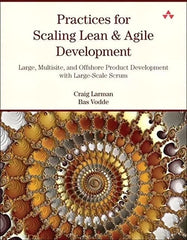 “Scaling with Lean and Agile Vol 1 and Vol 2” by Bas Vodde and Craig Larman guides organizations looking to adopt and scale Agile and Lean practices. The book provides a comprehensive overview of Lean and Agile principles and practices and explains how they are applied in large-scale organizations. The authors explore the scaling challenges and offer practical solutions and techniques for addressing them.
“Scaling with Lean and Agile Vol 1 and Vol 2” by Bas Vodde and Craig Larman guides organizations looking to adopt and scale Agile and Lean practices. The book provides a comprehensive overview of Lean and Agile principles and practices and explains how they are applied in large-scale organizations. The authors explore the scaling challenges and offer practical solutions and techniques for addressing them.The book covers product portfolio management, enterprise-level Agile, and Agile architecture and design. The authors also provide case studies and examples to illustrate the concepts and practices discussed.

